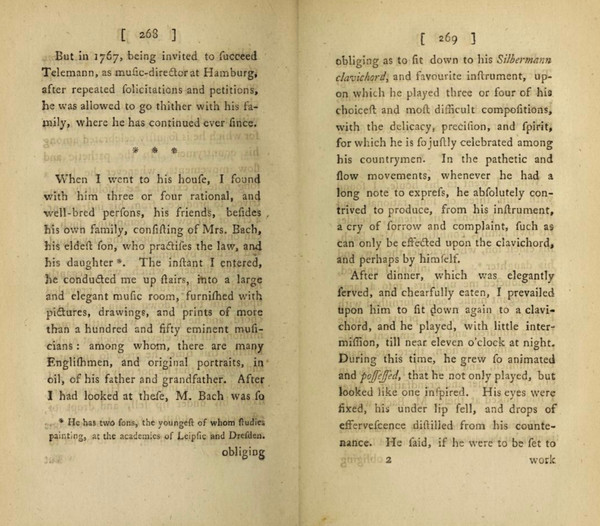Gottfried Silbermann
Настоящее имя: Gottfried Silbermann
Об исполнителе:
Gottfried Silbermann (14 January 1683, Klein-Bobritzsch, Saxony — 4 August 1753, Dresden) was a German maker of organs, fortepianos, harpsichords, and clavichords, widely regarded among the most influential XVIII-century builders. Silbermann was considered the original piano inventor for many decades until more rigorous research assigned this honor to Italian maker Bartolomeo Cristofori (1655—1731). In 1702, nineteen-year-old Gottfried traveled to Strasbourg, an eastern French city near the German border, to study organology with his older brother, Andreas Silbermann (1678—1734). He apprenticed for seven years, looking over the workshop while Andreas resided in Paris in 1704–06. After returning to Saxony in 1710, Gottfried opened his studio in Freiberg. By 1736, he earned a prestigious Kgl. Poln. und Churfürstl. Sächs. Hof-und Landorgelbauer title ("Royal Poland, Electoral Saxon & Country Court's organ builder"). Silbermann was a scrupulous engineer and worked persistently on improving and further developing the complex and high-precision Cristofori's mechanical action. A fascinating anecdote published in the 1785 journal Schlesische Provinzialblätter ("Silesian Provincial Papers") illustrated Gottfried's inventiveness in various aspects of his oeuvre — he would travel to small countryside churches and offer to replace their pews for free, as long as he got to keep the old benches (thus, collecting quality old wood, perfectly aged indoors for hundreds of years). Among Gottfried's notable inventions was Cembal d'amour, a clavichord variation with much longer strings struck at their mid-point (providing a more robust, longer-lasting tone with a broader range of loudness and softness). Silbermann sued Johann Ernst Hähnel (1697—1777), a German organ builder from Saxony, for stealing his design under a new "Cimbal Royal" name; in 1731, the court fined Hähnel, forcing him to pay considerable restitution to Silbermann. In a curious twist of fate, Gottfried was similarly caught red-handed in blatant copying of pantalon, a gut-strung variety of a concert dulcimer, less than five years earlier. In 1727, Pantaleon Hebenstreit (1668—1750), the "pantalon" inventor, brought legal action against Silbermann, as indicated by Stewart Pollens in the 2000 article "A Pantalonclavichord by C. Kintzing of Neuwied, 1763," prohibiting him from making such instruments. Pollens further speculated this could've influenced Gottfried to turn towards making pianos (essentially, hammered dulcimers). A few notable composers and musicians highly revered Silbermann's clavichords, including C.P.E. Bach, who even dedicated one of his 1781 works, Abschied von Meinem Silbermannischen Claviere, In Einem Rondo (H272 Wq66), to the cherished keyboard, and German organist C.F.D. Schubart (1739—1791). According to Johann Friedrich Agricola, Silbermann had a relationship with Johann Sebastian Bach (as described in Christoph Wolff's 2000 book "J. S. Bach: The Learned Musician"). In December 1736, Bach gave the inaugural concert at Frauenkirche Dresden on Silbermann's new organ and allegedly provided Gottfried with critical feedback on early piano prototypes, subsequently granting völlige Gutheißung, or "complete approval," on more advanced models. (A surviving May 1749 receipt indicates Bach helped to sell one of Gottfried's fortepianos.) Silbermann never married and bequeathed the business and considerable fortune to his nephew, Johann Daniel Silbermann (1717—1766), who joined Gottfried's workshop around 1752, shortly before his demise. Silbermann had several other prominent apprentices: ✦ Johann Andreas Silbermann (1712—1783), his nephew and later the teacher of Johann Andreas Stein (1728—1792), a notable maker who perfected the "Viennese action" found in the fortepianos played by Haydn, Mozart, and Beethoven ✦ Johann Heinrich Silbermann (1727—1799), Gottfried's third nephew, an outstanding instrument builder who kept improving his uncle's design and experimented with various fortepiano and clavichord constructions; according to some researchers, Johann Heinrich could've guided and inspired a prominent French-Austrian piano maker, Jean-Kilien Mercken (1743—1819) ✦ Johannes Zumpe (1726—1790), regarded as the most prolific maker and evangelist of compact square pianos, and Americus Backers (ca.1740 — post 1778), one of the inventors of the "English action" (further modified and improved by Sébastien Érard (1752—1831) and Henri Herz (1803—1888) and still used in all grand pianos today). After immigrating to England, Zumpe and Backers spearheaded the so-called "Twelve Apostles," a group of British makers who actively propagated and popularized Christofori/Silbermann's fortepiano school







